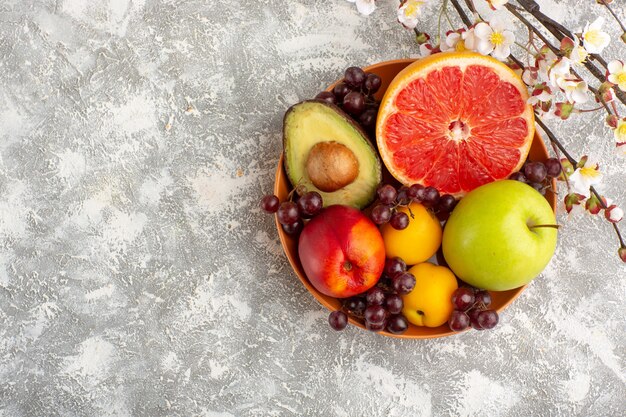Discover the Best Fruits for Managing Diabetes
Dealing with diabetes often means reevaluating your diet to manage blood sugar levels effectively. A common query among those managing diabetes is, "What fruits are beneficial?" While fruits are nutritious, some can cause spikes in blood sugar. Here are fruits deemed excellent for people with diabetes due to their low glycemic index (GI), and their ability to provide essential vitamins, minerals, and fiber.
Top Fruits for Diabetics
🍎 Apples
Packed with fiber and vitamin C, apples are a convenient and healthy snack. Their low GI rating makes them an excellent option for keeping blood sugar stable. Including apple slices with your meal or as a snack can provide a sweet flavor without the sugar rush.
🫐 Berries
Berries, such as strawberries, blueberries, and raspberries, are powerhouses of antioxidants and fiber. They help improve insulin sensitivity and are lower in sugar than many other fruits. Sprinkling them over oatmeal or yogurt provides a delicious, diabetes-friendly meal.
🥝 Kiwi
Not only is kiwi a refreshing fruit, but it also comes with high fiber content and vitamin C, which are beneficial for heart health. With a low GI, kiwis make a wise addition to your fruit repertoire.
🍒 Cherries
Cherries, especially tart ones, are known to fight inflammation. Their anthocyanins may increase insulin production, keeping your blood sugar in check. Enjoy them fresh in season or frozen year-round.
🍊 Oranges
Citrus fruits like oranges are famous for their vitamin C benefits. With a low GI and high fiber content, they help slow sugar absorption, supporting better blood sugar levels. Opt for the whole fruit over juice to gain maximum benefits.
🍑 Peaches
Peaches offer vitamins A and C with minimal glycemic impact. Their sweet flavor can form a base for a colorful fruit salad or smoothie that's both satisfying and nutritious.
🍐 Pears
As a fiber-rich fruit, pears help regulate blood sugar levels. Their impressive vitamin content, including vitamin K and copper, enhances their health grip, making them a diabetic-friendly choice.
Embracing these fruits can make a notable difference in managing diabetes, providing both nutrition and satisfaction without undesirable blood sugar swings. However, remember that portion control remains critical. Pairing these fruits with a protein or healthy fat can further stabilize blood sugar levels.
Transitioning from better managing diabetes naturally leads us to explore higher-value health perspectives, such as available support systems. Diabetes management can be costly, not just in diet planning but in medical expenses. Enter government aid programs and financial assistance to lighten the financial load.
Essential Financial Assistance and Educational Opportunities
- Medicaid and Medicare: 🤝 Both programs can help cover costs associated with diabetes management, including medications and supplies.
- Supplemental Nutrition Assistance Program (SNAP): 🍏 Assists with purchasing nutritious foods needed to sustain a balanced diet.
- Diabetes-Specific Grants and Scholarships: 📝 Available for education and research, these opportunities help fund further learning in diabetes care.
- Credit Counseling Services: 💳 To provide guidance for those struggling with medical bills or needing payment plans.
- Financial Education Classes: 🎓 Offering insights on budgeting, cost-saving measures, and managing medical expenses effectively.
Incorporate these resources into your strategy to benefit your overall lifestyle and bolster your efforts to manage medical costs associated with diabetes. Stay informed and engaged, not just about what foods to eat, but about the mechanisms that can support your financial and educational needs, creating better, more sustainable lifestyles.
